Anyone who has seen History's Vikings will be familiar with the shield maiden (also skjaldmaer/skjaldmær). Shield maiden characters like Lagertha, Torvi, and Porunn are staples of the show and in no small part are responsible for its popularity. The concept of strong, warrior women has been embraced by fans of the show, cosplayers, females in the military and law enforcement, and many others.
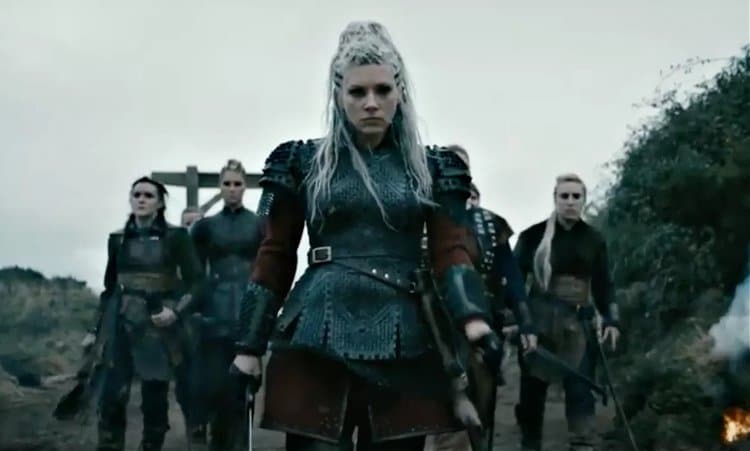
We spoke with experts behind the show Vikings, the University of Nottingham's Centre for the Study of the Viking Age, and elsewhere to dig a little more into the iconic female warrior archetype.
But setting Hollywood aside, did the Viking shield maiden exist outside of legend? Were shieldmaidens real or myth? The answer is, probably a little bit of both. Experts disagree. There is ample proof of the concept, but very little to prove skjaldmaer were more than a rarity.
The Viking shield maiden, or skjaldmær in the sagas, was a female warrior archetype from Nordic and Germanic folklore and mythology. According to early Scandinavian sagas like the “Deeds of the Danes” (Gesta Danorum), “The Saga of Hervör and Heidrek” (Hervarar saga ok Heiðreks), and “Kings Book” (Codex Regius or Konungsbók), they were women who trained for and waged war professionally alongside the men.
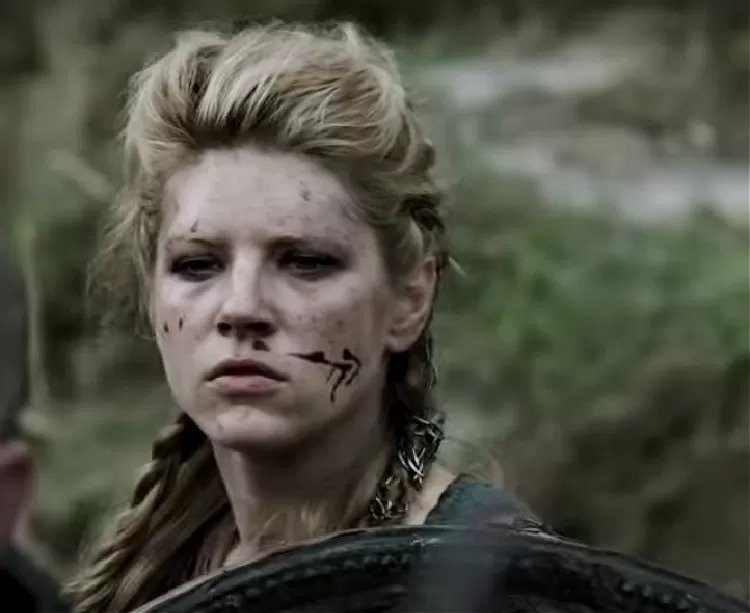
The Shield Maiden Lagertha, from History Channel's series Vikings. Was Lagertha a real Viking? Likely so, though the real-life Lathgertha/Ladgerda may not have been quite so larger than life as the 13th-century scholar Saxo Grammaticus would have us believe.
We spoke with one of the experts behind the popular television show. Justin David Pollard is a British historian and producer/historical consultant for the History Channel series Vikings.
Were Shield Maidens Real?
Stories of Viking women can be found in folklore, but it should be noted that much of the Scandinavian folklore should be considered unreliable at best. Much like Greek mythology, there is a blurring of what happened versus what was greatly embellished. The fact that these stories were passed down as sagas told to entice an audience only further blurs the reality from good storytelling.

Several questions thus need to be asked:
How much of what we know from Shield Maidens comes from Norse sagas?
“Almost everything we know of Shield Maidens comes from the Norse sagas,” Pollard answers.
He goes on to explain.
“Contemporary accounts are very sparse, there being no great literary tradition amongst the Vikings at the time, and the sources we do have are written almost exclusively by Christian clerics who have a very male-centred view of the world. There are some Arabic sources too but again they're pretty androcentric.”
There are reliable historical resources, including those of 12th-century Danish historian Saxo Grammaticus, but we must remember too that his work was likely based on those same sagas that had been passed down. What adds to the evidence to support the existence of such women warriors aren't just the stories, but the fact that figurines and sculptures have been found that depict female fighters.
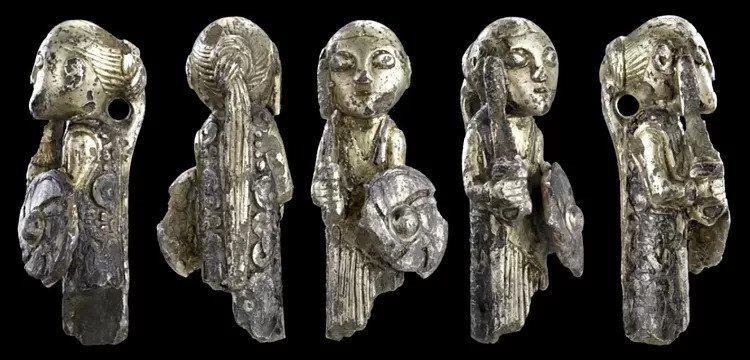
The Valkyrie from Hårby depicts a shield maiden with a sword and shield.
How much of what is mentioned in sagas such as Hervarar saga ok Heiðreks and in Gesta Danorum is then based on fact?
“Very little I would say,” said Professor Judith Jesch of the University of Nottingham's Centre for the Study of the Viking Age. “The Hervarar saga is based on some very old legends and poems, which we cannot reconstruct.”
“When these traditions were turned into a saga in medieval Iceland, that story was envisaged as taking place long ago and far away and not to be taken literally. It was also influenced by the concept of Amazons, which the Scandinavians were just becoming familiar with at the time. Similarly, when Saxo wrote the Gesta Danorum, he was also clearly influenced by ideas of Amazons.”
“Unlike the saga, he did not romanticize the past, and the idea that women were warriors was anathema to him – he was a man of the church and his views of women were as you might expect.”
Despite the fact that what we see is fictionalized, there is no denying that the Shield Maiden has become quite common — and extraordinarily popular — in modern storytelling.
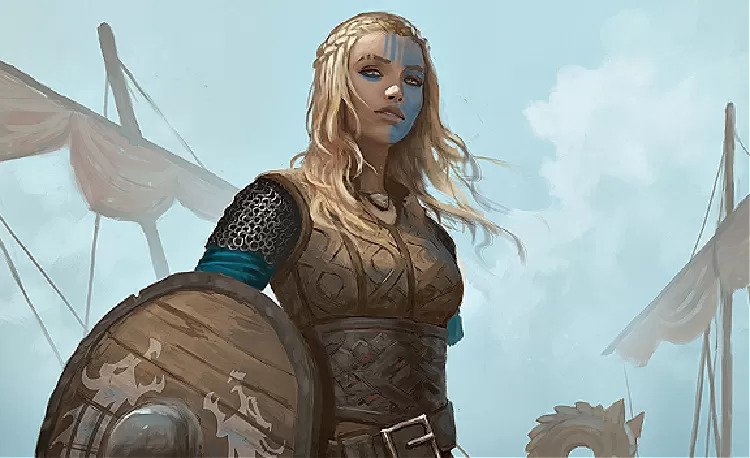
But does this have to do with the fact that this is an actual historic case of strong women who took part in battle and adventure at a time when a lot of women barely ventured beyond their villages?
“There is a conscious effort amongst historians to re-establish women in the historical record and it was a very conscious decision for us when Michael Hirst and I started storylining Vikings,” says Pollard.
“One of the great aspects of the story that I wanted to get over was that women in Scandinavian society had many more rights than their Christian equivalents and were powerful actors in their own right. Later medieval and post-medieval historians eradicated them from this history and until very recently we were all brought up with the idea that anything before the 20th century was very much a ‘man's world' where women had secondary domestic roles.”
“This simply wasn't the case, however much medieval monks wished it was. Stories of shieldmaidens, we were told, were fantasy. Then recent reanalysis of a number of Scandinavian warrior graves has shown that these were of women. We had to tell that story.”
Of course, it should be noted that what makes for good storytelling has remained true through time eternal. This is true of all historical dramas – TV shows such as I Claudius to Rome to Spartacus present an idealized version of the late Roman Republic and early Roman Empire with attractive lead characters in generally clean settings.
The reality is that filth would have been everywhere while the characters should have had far from perfect skin and teeth.
Vikings presents a grittier version of that post-Roman world, but it could be argued it is still idealized for the audiences much the way other shows like Black Sails have presented a romanticized life of pirates.
Jesch counters the view that Shield Maidens were even as common as fiction – then and now – presents.
“Since female warriors, even if they existed, were very rare in the Viking Age, there is no ‘fact' on which to base the fiction,” she explains. “The fictions are partly based on later texts like those you mention, and partly on sheer fantasy.”
It would have thus been uncommon at best, Jesch maintains, for the women to fight alongside the men.
“They did have a concept of armed – though not fighting – women in the mythological Valkyries, but these were creatures of the imagination,” she adds.. “And as I said, they did not fight, though they were present on the battlefield. I believe that “shield-maidens” was a term used in Old Norse that was derived from the idea of Amazons.”
“Ideas of saints as warriors meant that some of these terms, including Shield Maidens and berserkers, could be used in a Christian context. There is a story (quite later) about an Icelandic nun who is said to have been ‘God's shield-maiden', she is ‘armed with faith' and so on.”
Given those facts, it seems that much of what came from the Norse sagas may have further been fictionalized for our modern audiences.
But has the mythic version been further filtered to work into the story?
“There have always been strong women in history, but they are massively underrepresented in the sources which concentrate on male “hard” power – wars – rather than female “soft” power of diplomacy,” says Pollard.
He explains further.
“The problem is we have so few contemporary sources for them. Historians in the past liked “laws and wars” and that was what they wrote about. Where they bothered to write about women it was often in a derogatory sense. A woman wielding power was ‘wrong' and often associated with witchcraft so the images are often very negative.”
Thus Pollard had to reconstruct the concept of Shield Maidens, as well as all the women in the series, from very little source material.
“Across the series we took stories from the sagas, as although they were written long after the period we were dealing with, they were part of Scandinavian culture and so felt authentic to us,” he explains.
“Having said that, it looks archaeologically like there really were Shield Maidens and we wanted to have them boldly centre stage, restored to a place in history they, like so many other women had been erased from.”
Where the reality may differ is that entertainment must borrow from and condense different eras to fit the story. As entertainment, it works, but it should not be confused with the actual historic record.
“I think it's important to distinguish three categories,” says Jesch.
“Shield-maidens, as I describe above, are a literary concept from after the Viking Age, heavily influenced by the idea of Amazons, and creatures of the imagination. Valkyries are mythological creatures, also creatures of the imagination.”
“They do however have a longer pedigree in Scandinavian culture. However, they did not fight, though they were associated with war and the battlefield.”

The truth may be that actual female warriors in the Viking Age were thus likely very rare if they existed at all.
“It was possible, but if they existed, they would have been just a few individuals who chose a different lifestyle,” said Jesch. “But although possible, I do not find any of the claimed evidence for them to be convincing.”
Myth or reality, the popularity and of the Shield Maiden is incontestible today.
Read the original article in its entirety at Anachrobellum.


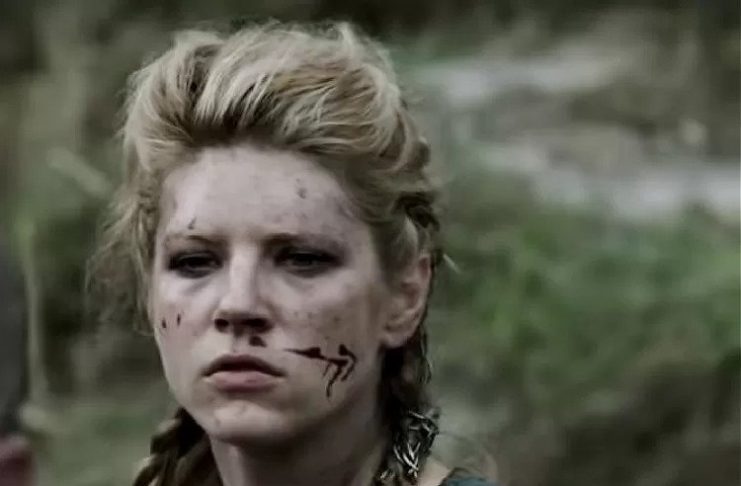
The Romans were very clean people- their public baths were legendary. There were warrior women in the past in several cultures, it was an exception though, not the rule. Most were higher ranking in their society, nobles or royalty, like Boudicca, of which there has been much written. The natives of North America had stories about “manly hearted women”. Of course we look at it through our own lens of the present in an attempt to justify modern life, and I’m not sure why. We are all much weaker nowadays than even a womanly woman who stayed home in the medieval period. The people of times past were much stronger than the modern people, both physically and psychologically. After all, when you live through the Black Death that killed a third of the world’s population, and yet go on about your day, you would die of hysterical laughing fits when you see the modern snowflake trembling in a mask, scared to death of a common cold.
That’s for sure.
Of course shield maidens weren’t real. Even the idea of it is laughable. But that’s okay, I think you’d be shocked how many people believe Game of Thrones was real. Or that The Sons of Anarchy is a real motorcycle club. Really. Probably about the same population who think men can give birth.
I think to dismiss the possibility of shield maidens is a mistake without proof. You can see my comment above. I am not a historian but I think the points I have made have some validity at least for consideration.
This is just another of hundreds among the Hollywood propaganda films aimed at gender-bending and cross-dressing which have appeared over the past half-century or more. The non-binary perception of gender and the success of this medium in promoting it is now evident in the epidemic of transgenderism, especially among the under thirty age group. As long as elements of unisex and gender confusion predominate the way men and women dress, there will be no substantial remedy for society. I don’t hold much hope of that happening soon. As H. R. Halderman (of Watergate fame) said, “Once the toothpaste is out of the tube, it’s awfully hard to put it back.”
It might be wise to see if there was a parallel in other cultures at the same time. In the Turkish series Ertugrul and Osman which took place around the 1300’s Muslim women were depicted as being very capable fighters and some were a regular part of the Alps (soliders). I am sure there are other cultures that existed at the same time where females served as warriors or were at least trained to handle weapons for protection of the community. While the number may not have been high I would venture a guess that if these stories were found in poems and verbal history that there was at least some semblance of truth to them. I am no historian but I think these points are valid for consideration.